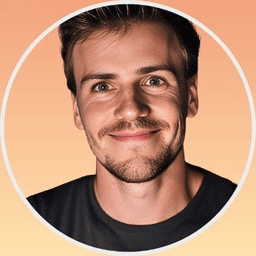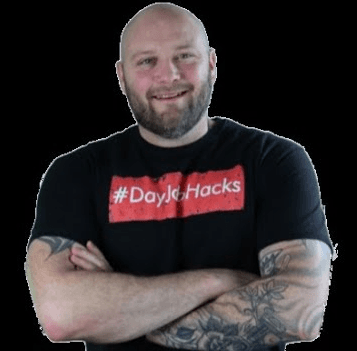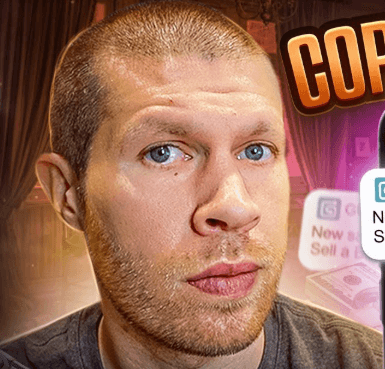How Tibo Louis-Lucas Transformed Failure into an Eight-Figure SaaS Exit with Tweet Hunter & Taplio


Business Description
Table of Contents
Navigate through the case study sections
Executive Summary
Case Study Content
Turning Setbacks Into Rocket Launches: Pony Express, Tweet Hunter, and Taplio
When serial founder Thibault (Tibo) Louis-Lucas set out with his partner, Thomas Jacquesson, they didn’t expect the rollercoaster ahead. Their journey included a failed app, a bankruptcy, and starting all over, proving that grit (and reading the market right) beats pedigree. This is the story of how they cracked the code with Tweet Hunter and Taplio, riding rapid iteration, bold partnerships, and a distinct growth mindset all the way to a multi-million dollar SaaS acquisition.
Trying. Failing. Learning. Again.
Most entrepreneurs don’t strike gold straight away. Tibo and Thomas’s stint began in the trenches with Pistache, an app teaching kids to do chores. Neat idea, but after two years it hit a wall: scaling was impossible. They sold it off. Next up was Dreamz, a gamified coding app for kids. It had promise, funding, even a team, but still hit bankruptcy. Most would pack it in or blame luck, but Tibo and Thomas used those mistakes to guide their next moves.
A Blitz of MVPs (and Zero Blockbusters)
In 2021, tired of rolling slow and burning cycles, they challenged themselves: build and ship a new product every week. Each idea launched fast, with no commitment unless it got traction. After a grueling ten tries there was no viral hit. The best gave $400 MRR. Nine others were duds. Frustrating? Sure. But then they built Tweet Hunter, at first just for themselves.
Tweet Hunter: The First Spark
Twitter was where they launched everything. But making content that sticks takes time. Tweet Hunter sketched out as a barely-there tool to surface viral tweets by keyword, tweaked by AI for creator inspiration. Priced at just $9/month and with some strategic tweets, it hit $1,000 MRR inside a few weeks, night-and-day compared to their previous launches.
The lesson: MVP first, then validate. Don’t build more than you must until real demand smacks you in the face.
Scaling With Influencer Equity
Finding product-market fit opened the next question: how to scale and not stall. Influencers had always worked as traffic drivers, so Tibo reached out for partnerships. One response changed everything: influencer JK Molina wanted equity, more skin in the game, not a paid promo. They brought him in as a partner, which triggered a $20,000 MRR jump after the relaunch.
Building on that win, they cloned their play for LinkedIn and launched Taplio. But this time, they went all-in and set up the "Creative Investor" board: 17 micro-influencers, each with 0.1% equity and no work expectations except to evangelize. It was almost risk-free viral marketing and community support. That board sent exposure to the moon for both products.
Free Tools Feed the Beast
Speed and creativity came next. To draw in even more users, they chunked out stripped-down tools taken from Tweet Hunter and Taplio and gave them away. Launched on Product Hunt (Tibo was Maker of the Year in 2022), these brought in waves of users who eventually upgraded. Social wasn’t just for noise, it became the primary funnel.
ARR to $3.5M: Fast, Then Faster
Their approach worked better than they could have hoped. In just 12 months, ARR hit $1M. It didn’t slow down; within two years, ARR hit $3.5M. Sounds like a founder fantasy, right? But the real secret sauce was discipline: validate hard, move fast, only keep scaling if paying users show up.
The Art of the (Early) Exit
It’d be easy to ride the momentum, but Tibo and Thomas knew their tools relied heavily on Twitter’s API (and LinkedIn’s policies for Taplio). After seeing API pricing swing from free to $42K per month and dodging random outages, they felt it was time to get out. They hired a broker with no luck, then lucked into a personal connection, Guillaume Moubeche (lempire’s founder), who happened to be a childhood classmate.
Their deal: $2M upfront and an earnout, aiming for a total of $10-$15M. They accepted a smaller upfront, gambling on lempire’s natural fit and understanding of the business.
Sticking Around, and Exploding Again
Part of the sale agreed Tibo and Thomas would stick around for two years. They worried maybe they weren’t suited for scaling. Ironically, during those two years they quadrupled results anyway. Sometimes traction trumps self-doubt, especially when you’re finally in the right market, with products people crave and partners who add real reach.
Final Takeaways for SaaS Founders
- Failure is standard. Move quickly. Pivot even faster.
- MVP isn’t a buzzword, don’t build what users haven’t proven they want.
- Influencer partnerships with equity can turbocharge word-of-mouth.
- A suite of free micro-products can funnel high-quality, low-cost leads.
- Understand your dependencies and prep for market shifts.
- Consider exit timing, sometimes, cashing out early is the shrewder move.
Tibo’s story of Tweet Hunter and Taplio is proof: start small, recruit hustlers, move at breakneck speed, and always let the market lead. The compounding effect of fast learning, transparent equity deals, and free user magnets turns what could be just another app into a SaaS rocket ship.
Business Plan
Market Problem
Many aspiring entrepreneurs struggle with turning innovative ideas into successful products, often facing repeated failures and financial…
See the full market problemSolution
Pony Express, through Tweet Hunter and Taplio, tackled this problem by focusing on rapid product iteration and MVP development. They built…
See the full solutionTarget Market
Small Business Owners
They seek affordable social media management solutions to grow their online presence without hiring large teams.
Content Creators
Influencers and creators need tools to optimize their social media engagement and discover trending content easily.
Competitors
Hootsuite
A well-established social media management platform that offers scheduling and analytics but lacks the rapid innovation seen in Pony Express.
Buffer
Known for its simplicity, but it doesn't provide the same level of personalized growth strategies through influencer partnerships.
Competitive Advantage
Pony Express stands out due to its unique approach of combining rapid MVP iterations with strategic influencer partnerships. By offering…
See the full competitive advantageSales and Marketing
The marketing strategy revolved around leveraging social media channels, particularly Twitter and LinkedIn, to engage with potential users.…
See the full Sales and marketing planSuccess Milestones
Build MVP
Develop the first version of Tweet Hunter to test core functionalities with early adopters.
Launch Tweet Hunter
Officially release Tweet Hunter and acquire initial user base through organic social media outreach.
Key Takeaways
- 1Rapid validation with MVPs stops you wasting years on unproven ideas.
- 2Leveraging influencer partnerships with equity drives massive B2B SaaS growth.
- 3Free, simple tools generate viral traction and funnel users to your main product.
- 4Understanding and mitigating platform dependency is crucial to long-term SaaS survivial.
- 5Leaving before stagnation, timing your exit based on risk and personal skill fit, can maximize returns.
- 6Even after cashing out, original founders can outperform their own expectations if they stick with growth.
Key Facts
Tools & Technologies Used
Premium Content Locked
Subscribe to access the tools and technologies used in this case study.
Unlock NowHow to Replicate This Success
Premium Content Locked
Subscribe to access the step-by-step replication guide for this case study.
Unlock NowInterested in Being Featured?
Share your success story with our community of entrepreneurs.
Explore More Case Studies
Discover other inspiring business success stories

From Steady SaaS to Successful Exit: Pulse CMS Sells for $55,000
Pulse CMS, a subscription SaaS for website management, grew organically for 11 years, without paid ads or SEO. Handled b...
Pulse CMS

How Joey Babineau Hacked Google Ads for $60K/Month
Affiliate marketer Joey Babineau spent over $3 million on Google Search Ads and now averages $60,960 a month in revenue....
Joey Babineau Affiliate Marketing

How a College Student Bought a $700K Home with Dropshipping
Bryan Guerra was grinding through college working at a golf course for $10/hr. Facing mounting bills and stress over dec...
Guerra Dropshipping Store
